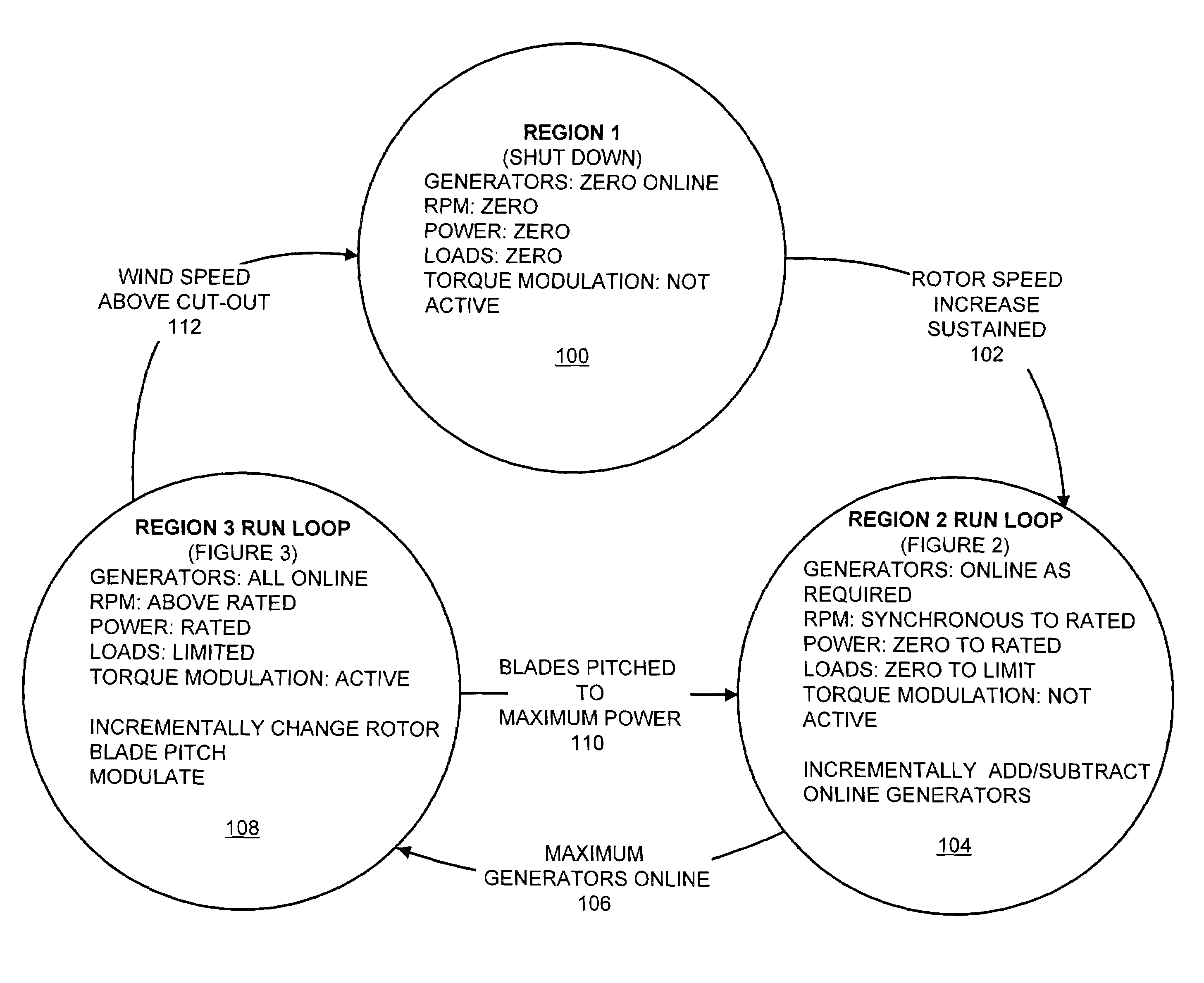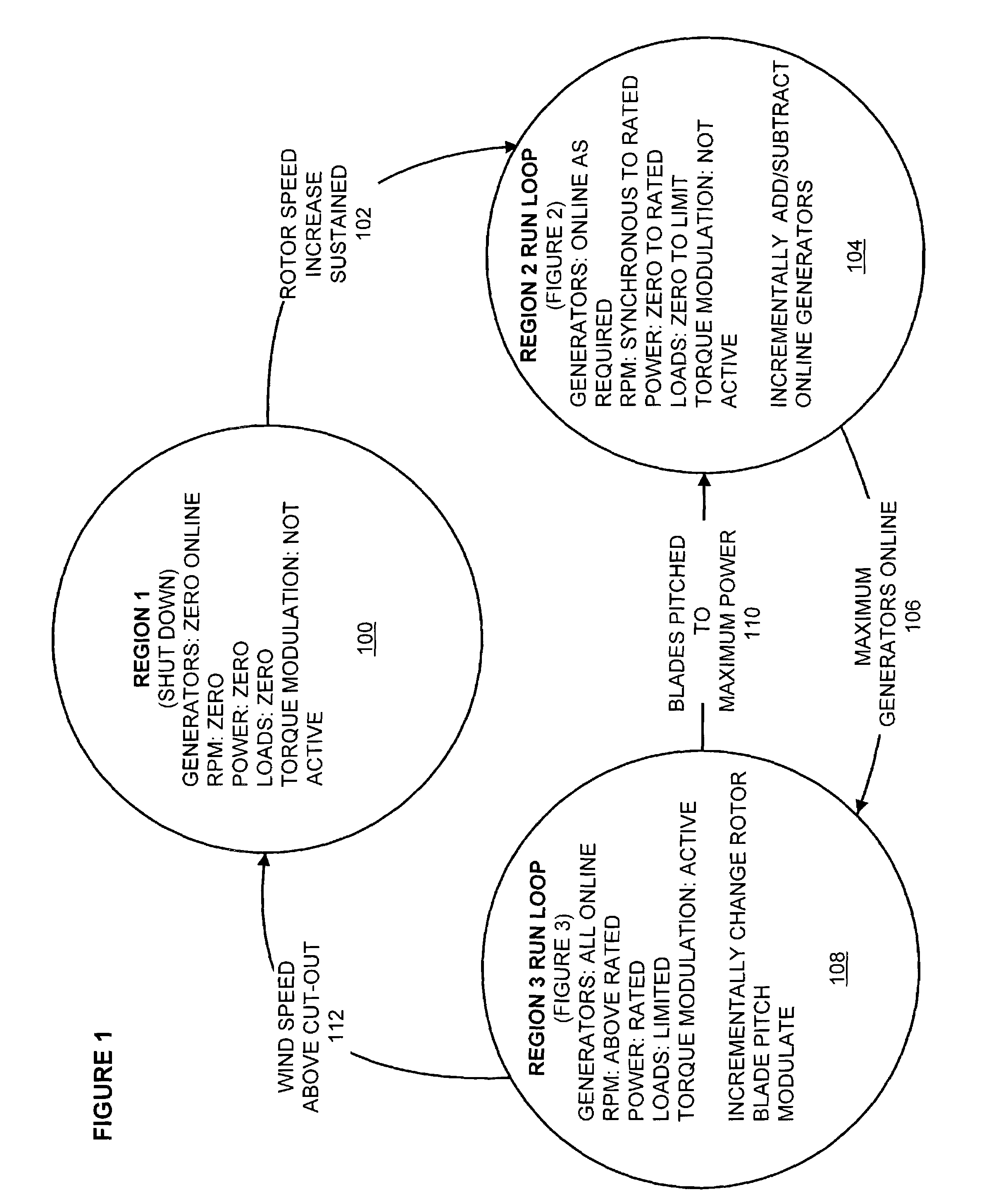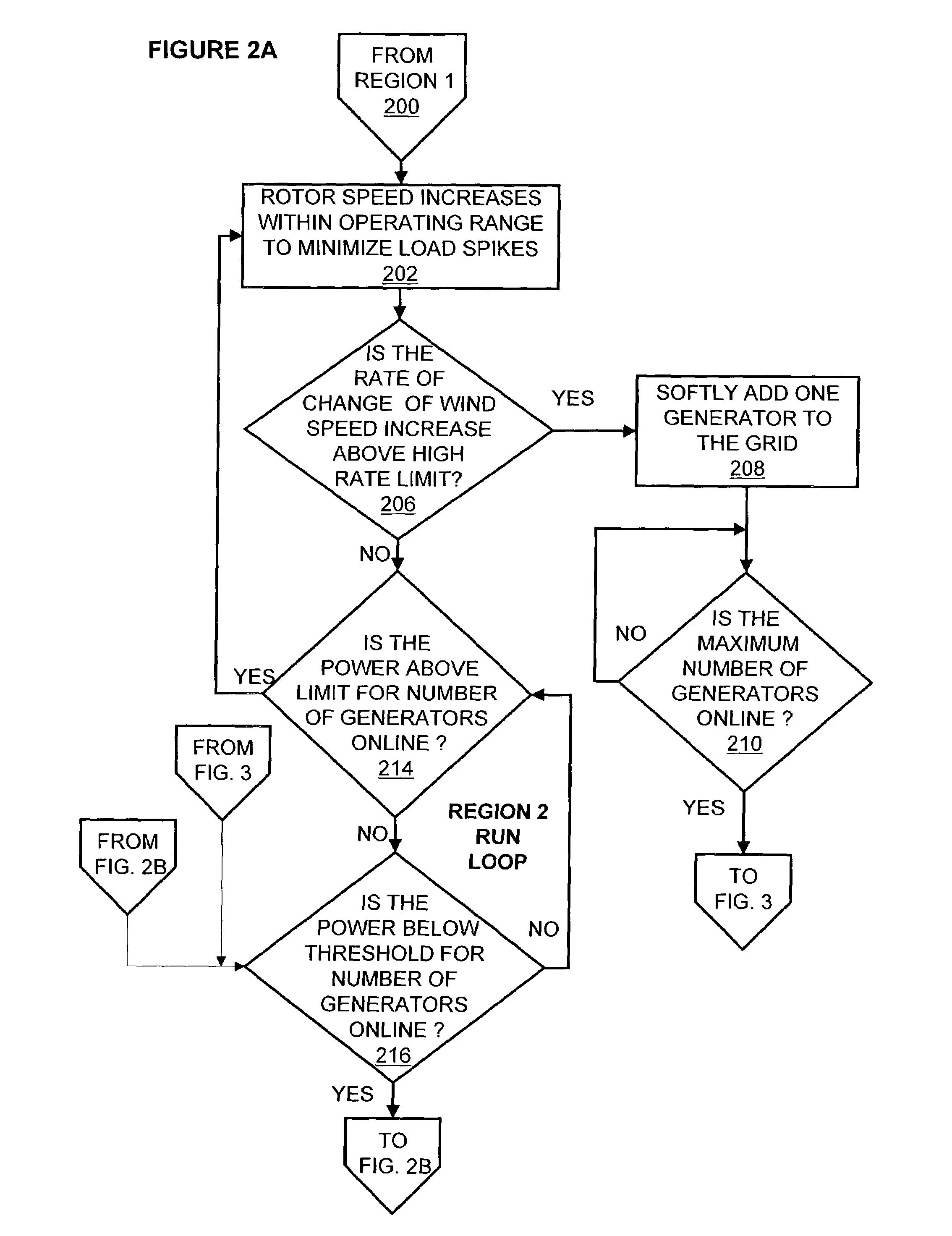Method of controlling electrical rotating machines connected to a common shaft
a technology of electric rotating machines and common shafts, applied in the direction of electric generator control, motor/generator/converter stoppers, dynamo-electric converter control, etc., can solve the problem of large torque increase, achieve the effect of avoiding “power hogging” and maximizing system efficiency
- Summary
- Abstract
- Description
- Claims
- Application Information
AI Technical Summary
Benefits of technology
Problems solved by technology
Method used
Image
Examples
Embodiment Construction
[0023]This invention applies principally to wind and ocean current turbine generators employing the Distributed Generation Drivetrain (DGD) powertrain described in U.S. Pat. No. 6,304,002 and using a number of rotating electrical machines, either motors or generators. Preferably the number of electrical machines is five or more. The large number of machines is significant because it reduces the power rating of any single electrical machine to below 20% of the total system rating, allowing for enhanced use of the controls taught by this invention.
[0024]As illustrated by the chart of FIG. 4, for a wind turbine system, there are three principal wind speed regions. The turbine is designed to operate differently in each region. In very low wind speeds (below approximately 3–5 m / s), Region 1 operation controls do not allow the turbine to generate any electricity, as the wind energy resource is not sufficient. As winds increase into Region 2 operation, the rotor begins to produce power. It...
PUM
 Login to View More
Login to View More Abstract
Description
Claims
Application Information
 Login to View More
Login to View More - R&D
- Intellectual Property
- Life Sciences
- Materials
- Tech Scout
- Unparalleled Data Quality
- Higher Quality Content
- 60% Fewer Hallucinations
Browse by: Latest US Patents, China's latest patents, Technical Efficacy Thesaurus, Application Domain, Technology Topic, Popular Technical Reports.
© 2025 PatSnap. All rights reserved.Legal|Privacy policy|Modern Slavery Act Transparency Statement|Sitemap|About US| Contact US: help@patsnap.com



